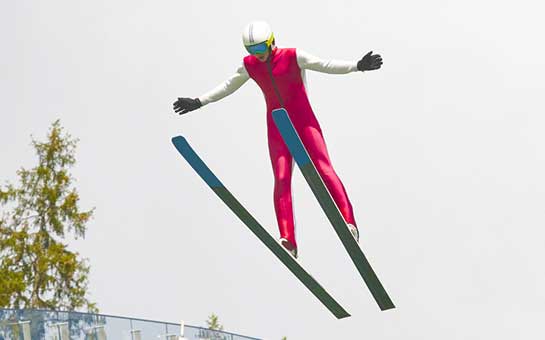Ski jumping may look scary to the average person, but if you want to go soaring through the air with nothing to break your fall but a hard, frozen surface, then it’s right up your alley.
Ski jumping is not for everyone. It takes skill, training, and the right equipment to even attempt it. But the adrenaline rush of successfully landing a jump after flying hundreds of feet through the air is unparalleled.
It is a risky adventure sport where the injuries could be severe. Purchasing ski jumping travel insurance ensures that the medical treatment for such injuries wouldn’t strain your finances.
Travel Insurance for Ski Jumping
Any adventure sport, including ski jumping, has its risks of injuries. An extreme sports travel insurance plan can cover those medical bills even while you travel. Be aware that these insurance plans don’t offer coverage for injuries sustained during competitions.
Injuries related to extreme sports can often be severe and, consequently, very expensive to treat. But if you cover yourself with a ski jumping travel insurance plan, then those medical bills will not affect your finances too heavily. Some insurance plans will even cover damage to your equipment, although you should check the certificate wording of your plan to be sure.
Not all travel insurance policies cover extreme sports like ski jumping in their basic plans. Get a ski jumping travel insurance plan before you go soaring through the air.
Introduction to Ski Jumping
Ski jumping was invented in 1808. Ole Rye, a Norwegian army officer, wanted to show off his skiing skills to his friends and made the first ski jump, covering 30 feet. But it wasn't until the first Winter Olympics in 1924 that ski jumping was seen as a global competitive sport.
Both the technique and the equipment have undergone radical changes since then. Now, even amateur ski jumpers are expected to clear a distance of 80 feet. If you are new to the sport, then consider starting on K-25 slides, and then slowly work your way up to the K-50 slides and above. Unsurprisingly, the higher the slide, the faster and riskier the jump will be.
Maintaining your form during the jump is crucial. If your skis are not aligned or not parallel to the surface as you land, you will be in for a very painful crash. Before executing a jump, you need to practice your form under the careful supervision of a trainer.
Ski jumping is a hazardous sport. Its risks depend on both your skill and other factors like the weather, wind pattern, and even the snow. Covering yourself with hazardous sports travel insurance will minimize the financial impact of those risks.
Risks of Ski Jumping
As dangerous as it looks, ski jumping is one of the relatively low-risk winter sports. The Winter Olympics recorded just an 8% injury rate for ski jumping, which pales in comparison to the 49% injury risk of freestyle aerial skiing. However, keep in mind that these accident rates are for highly trained athletes. Amateurs who are starting out are bound to have a higher injury ratio. The slightest misperception can result in a high-speed disaster.
The most common acute injuries come from crash landings and include concussions and knee ligament damage. These can be quite severe, requiring extensive medical treatment. Until you perfect your form, you might be likely to sprain your ankle on the landing.
If you have adventure sports travel insurance coverage, then you can ensure that such medical treatment will not become a financial burden.

